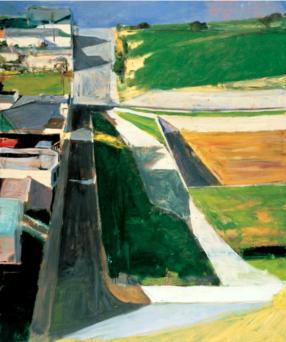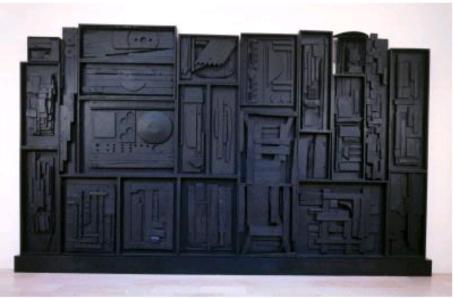Lesson Description
By viewing pieces of artwork by students will discover how math is incorporated into artwork.
Objectives
Students will
- Understand how artists incorporate math into their artwork.
Materials
- Artworks
- Scraps of wood
- Scraps of cardboard
- Hand books
Vocabulary
2-dimensional shape
shapes that are flat on the page, such as a square, circle, rectangle, triangle, etc.
3-dimensional shape
a figure that has height, depth, and width. Such a figure does not lie entirely in a plane.
Square
a plane figure with four equal straight sides and four right angles
Rectangle
A plane figure with four straight sides and four right angles, esp. one with unequal adjacent sides, in contrast to a square.
Polygon
plane figure with at least three straight sides and angles, and typically five or more.
Symmetry
the quality of being made up of exactly similar parts facing each other or around an axis.
Line
a continuous extent of length, straight or curved, without breadth or thickness; the trace of a moving point.
Quadrilateral
a four sided figure
Procedures
Introduction
Using Visual Thinking Strategies (VTS) learning strategies with CityScape 1, 1963, guide students using questioning techniques.
Ask students questions:
1) What’s going on in this picture?
2) What do you see that makes you say that?
3) What more can we find? For clarifying ask
4) Can you talk a little bit more about that?
Follow VTS guidelines in acknowledging each student’s response with a “yes” or “ok” in order to reserve judgment of any kind.
Next, visually observe Sky Presence II by Louise Nevelson and Cityscape 1, 1963 by Richard Diebenkom. Students compare 2 pieces of artwork. You may have them work independently for 5 minutes with a Venn diagram to collect their observations and thoughts about the 2 paintings prior to a discussion (Webb’s Depth of Knowledge).
Follow with questions: What similar geometric figures do you find in these 2 works of art. How does each artist use math to construct their art?
Activity
Student created collage: student creates a collage that illustrates their understanding of geometry’s influence in art using found scraps of wood or cardboard. Student decides which color they wish to paint their art (black, white, or gold, as depicted in Nevelson’s artwork – shown on website noted above).
Further Investigation
Student(s) can research the time period 1960s, when both these pieces were created. Does the student think there is any historical basis for the paintings?
Resources
Picturing America Image
Richard Diebenkom
CityScape, 1, 1963
Oil on canvas
San Francisco Museum of Modern Art

Newark Museum Image
Louise Nevelson
Sky Presence II, 1960
Newark Museum Collection 
Assessment
Suggestions for assessments and writing activities/extension activities:
Student(s) paint a picture based on Richard Diebenkorn’s style of painting.
Students will write a reflection based on the essential question: How do artists incorporate math into their artwork?

Any views, findings, conclusions, or recommendations expressed in this publication does not necessarily reflect those of the National Endowment for the Arts.





